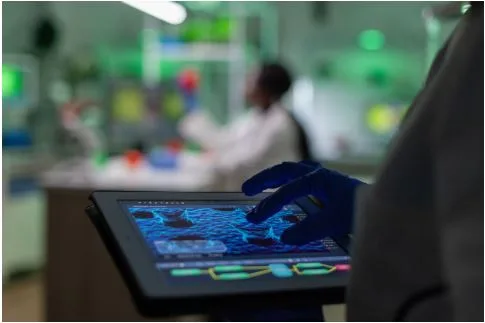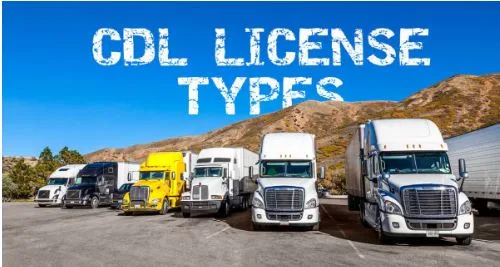From Faces to Blocks: Understanding Shape Detection and Game Solvers
In the world of modern software, pattern recognition and shape detection have become powerful tools. They underpin everything from biometric systems that identify faces to puzzle-game solvers that analyze board layouts and recommend optimal moves. In this article we explore two seemingly disparate yet conceptually connected domains: first, how a face-shape detector works; and second, a deep dive into the Block Blast Solver system that helps players when they get stuck in the popular “Block Blast” puzzle game. Along the way we’ll look at technical foundations, user experience, challenges, and the future of such tools.
The Technology Behind Face-Shape Detection
AI Face shape detector (or face-shape recognition) refers to computer vision systems that analyze an image of a person’s face and classify or infer its geometric attributes: oval, round, square, heart-shaped, diamond, etc. This technology is used in beauty and fashion apps (e.g. to suggest flattering glasses or hairstyles), augmented reality filters, and even in some security or biometric systems.
At a high level, a face-shape detector works by combining face detection, facial landmark extraction, and geometric classification. First, a face must be located in the image. Then, key points—such as the positions of the eyes, nose tip, mouth corners, jawline, and cheekbones—are detected. Finally, based on distances, angles, slopes, and ratios among those landmarks, the system infers the “shape class” of the face.
Face Detection and Landmark Extraction
Before a system can reason about shape, it needs to find the face in the image. This is typically done by a face detection algorithm—often using a convolutional neural network or cascade classifiers—that outputs a bounding box around the face region.
Once the region is isolated, the next step is to detect facial landmarks—a set of fixed points (often 68 or 81 or more) mapped to known facial features: corners of the eyes, edges of lips, eyebrows, the chin, and jawline points, etc. Modern systems use deep learning models (such as CNNs or variants of Hourglass networks or transformers) to output those landmark coordinates.
From Landmarks to Shape Classification
With the landmarks in hand, the system can compute a variety of geometric features: lengths of segments (for example, jaw width, forehead width, face length from forehead to chin), angles between lines, curvature of the jawline, or ratios (e.g. width vs height). Sometimes principal component analysis (PCA) or statistical clustering is used: training data of known face shapes can establish cluster centroids in feature space.
For instance, a face whose width across the forehead, cheekbones, and jaw are approximately equal might fall into the “square” category. A face that narrows significantly at the chin relative to the cheekbones might be classified as “heart-shaped.” The system then outputs a label (or probabilistic scores across labels) to the user or calling application.
Challenges and Limitations
Although conceptually straightforward, face-shape detection faces many challenges. One major issue is variation in pose and orientation: if a face is turned to the side, tilted, or partially occluded, the landmarks may shift or be missing. Lighting, facial expressions, beards, hairlines, or accessories also introduce noise. Another challenge is that face shapes form a continuous spectrum; forcing them into discrete categories (oval, round, square, etc.) oversimplifies the reality. Moreover, classification accuracy depends heavily on the training dataset: biases in the data (e.g. overrepresentation of certain ethnicities, ages, or genders) can degrade performance on underrepresented groups.
From a privacy standpoint, face-related systems must be carefully handled: storing or transmitting facial landmarks or images can raise ethical and legal implications depending on jurisdiction. In consumer-grade applications (e.g. beauty apps), designers often process images locally and avoid server-based data retention to mitigate privacy concerns.
Applications Beyond Beauty
Although one obvious application of face-shape detection is in cosmetics, fashion, and virtual try-ons (for instance recommending frames for eyeglasses based on your face shape), the same underlying techniques find use elsewhere. For example, in augmented reality (AR) filters (e.g. Snapchat, Instagram) to adjust overlays to face geometry; in forensic or identity systems (though more carefully regulated); or as part of more elaborate face-recognition or face-attribute systems (age estimation, emotion analysis). The underlying approach—detecting landmarks and classifying shapes—serves as a building block for richer facial analytics.
The Puzzle World: Block Blast and the Need for a Solver
Switching gears from faces to puzzles, let’s zoom into Block Blast, a highly addictive block-placement puzzle game widely available on mobile and web platforms. The core game mechanics are simple: you have a grid, and various shapes of blocks (like tetromino-style or other polyomino shapes) to place. The goal is to position them so as to fill entire rows or columns, causing those lines to clear and freeing up space. As the game proceeds, space becomes scarcer, and the correct placement of each block becomes more critical.
At early levels, gameplay is manageable, but as complexity rises, players often hit blockades where no obvious good moves remain. That’s where Block Blast solvers—tools like BlockBlastSolve or “black blast slover” (your term) —come into play: they allow you to upload a screenshot or reconstruct the board state and receive algorithmically optimal moves or hints.
While your link (blockblastsolve.net) appears to refer to one such solver site, many variants or clones exist (blockblastsolver.com, bbsovler.ai, etc.). These tools essentially apply the same principles of pattern detection and optimization, but to block-grid puzzles.
How the Block Blast Solver Works
Behind the scenes, a robust Block Blast solver integrates several components: image recognition, grid reconstruction, combinatorial search, heuristic evaluation, and move recommendation. Let’s trace that pipeline step by step.
- Input Acquisition — Screenshot or Manual Entry
Most solvers first take a screenshot from the player’s current game state. The screenshot must clearly show the entire grid and the available pending block shapes to place (often shown at the bottom of the game interface). Some solvers also support manual entry: the user inputs the grid by clicking cells or choosing from shapes, recreating the board.
For reliable results, the screenshot must be clean (no overlapping UI, no pop-ups, good resolution). Some solver instructions warn not to crop or modify the image so that the block shapes or grid alignment is lost. (As described in some solver sites’ guides.)
- Image Processing and Grid Recognition
Once the screenshot is obtained, the solver applies computer vision to detect the grid boundaries, individual cell divisions, and extract which cells are occupied versus empty. It may use edge detection, Hough transforms for lines, or deep-learning segmentation to isolate blocks. The solver must also detect the shapes currently available for placement (often shown as previews or “next pieces” in the game UI).
From these, the grid is reconstructed in an internal data structure (e.g. a two-dimensional array), with annotations for cell occupancy, block types, and possible placements.
- Search and Optimization
Given the grid and the available shapes, the solver faces a combinatorial search problem: where to place each shape to maximize line clears (or avoid deadlocks). The search space is large, especially if you consider multiple placements and the possibility of clearing multiple lines at once.
Solvers typically apply heuristic-guided search, pruning, and pattern evaluation. They may try all legal placements of each available shape, evaluate the resulting board state, and score based on metrics (number of cleared rows/columns, space left, potential for future placements, combinability). Some solvers also simulate hypothetical future moves (lookahead) to avoid dead-end placements.
Chain reactions—where placing a block triggers multiple row or column clears simultaneously—are highly prized, so the evaluation often gives bonuses for multi-line clears or setting up cascade opportunities.
- Solution Output and Visualization
After the search finds one or more optimal (or near-optimal) moves, the solver outputs them to the user. Many solvers visualize the recommended move by highlighting the block shape and its target position on the grid overlay. Some solvers give multiple candidate moves, ranked by score, or step-by-step hints (first place this block, then next etc.).
The user can then apply the recommended move in their game and continue.
- Privacy and Efficiency
Many solver tools claim that image analysis and decision logic occur in real time and are not retained — i.e. screenshots or board states are not stored on servers long-term. Indeed, some declare that processing is local or ephemeral, and that no user data is preserved.
Efficiency is also key: solvers attempt to return results in under a second (or a few seconds), so gamers don’t lose momentum.
How BlockBlastSolve (BlockBlastSolve.net) Fits In
While I could not find direct, detailed documentation about blockblastsolve.net, it appears to be one of the many solver-style websites operating in this domain. The core concept is that when a player is stuck in the Block Blast game, they can use such a solver site (or app) to upload their screenshot and receive hints or full solutions. This matches the general behavior of analogous solver services. Sites like blockblastsolver.com, bbsovler.ai, or file‐based solver clones illustrate the same pattern.b
Such a solver can be viewed as the gaming analog of face-shape detection: both require capturing an image, recognizing key structural features (faces or blocks), then applying classification or search to recommend a label or move.
In practice, a user visiting blockblastsolve.net would:
- Capture a screenshot of the Block Blast game at the moment when they are stuck.
- Upload it (or provide manual board input) to the solver interface.
- Wait a short time while the solver processes the board.
- Receive one or more recommended placements to clear rows/columns or avoid deadlock.
- Apply the suggestions back in the game to continue.
Because these solvers aim to be user-friendly, they typically provide a clean UI, optional manual input mode, and quick responses. Some even allow for alternate strategies or move ranking (e.g. “best immediate clear” vs “setup for future combos”).
However, users must beware: the solver’s suggestions are only as good as the board reconstruction and evaluation heuristics. On tricky boards or ambiguous placements, the solver might suggest a move that seems suboptimal or even unplayable if its vision processing misinterpreted the screenshot.
Merits, Risks, and Ethical Considerations
Advantages for Players and Learning
For many players, Block Blast solvers provide a lifeline when they hit a complex board with no apparent good moves. Instead of aimless trial and error, they get guided suggestions, saving time and frustration. For beginners, solvers can also serve as learning aides: by observing which moves the solver recommends, they can internalize patterns and strategies for future levels.
In competitive or leaderboard settings, leeway between winning and losing is often a single move. A solver may help bridge that gap, allowing players to break plateaus.
Risks and Limitations
The solver’s success depends heavily on accurate board recognition. If the screenshot is misaligned, the solver may mis-detect cell occupancy or block type, and suggest impossible moves. Also, solvers use heuristics and approximations — they may not always find the globally optimal move, particularly for deep lookahead situations.
Another risk is overreliance: players might become dependent on the solver and fail to develop intuition or strategic thinking. In extreme cases, they may avoid engaging with the game’s challenge and reduce enjoyment.
From a broader standpoint, some game developers may view solver usage as against game spirit or terms of service (though casual puzzle games rarely enforce bans around hints). There is also a possible tension if solver sites embed ads, trackers, or misuse uploaded screenshot data—users should verify the privacy policies of any solver site they use.
Ethical and Privacy Aspects
While Block Blast solvers deal with game screenshots (not faces or personal identity), users should still be cautious. Screenshots may sometimes contain personal overlays or UI elements (e.g. usernames, notifications). Solver services that store images or retain data pose privacy risks.
Better solvers process everything transiently or locally (i.e. within the browser) and guarantee immediate deletion of input data after processing. Transparent privacy statements and user control are vital.
Parallel Reflections: Face Detection vs. Block Solvers
It is illuminating to reflect on the parallels between face-shape detection and block puzzle solvers. Both belong to the family of pattern recognition systems: they take visual input, detect structural elements (landmarks or blocks), and reason about what moves or classifications to suggest. Both must handle noise, variability, occlusion, and ambiguous cases. Both can serve user-facing applications (beauty apps, game aides) and must balance speed, accuracy, privacy, and usability.
In face-shape detection, the system classifies a face into a category based on geometric features. In block solvers, the system chooses a move (or set of moves) based on combinatorial optimization. Yet both need to translate raw pixel data to a conceptual representation (landmarks to features; grid to internal cell states). And both must guide users: face-shape detection might tell you “your face is heart-shaped, here are recommended glasses”; block solvers tell you “place shape A here to clear two rows”.
Understanding this alignment offers interesting insight: advancements in one domain (say, better landmark detection) may cross-pollinate with techniques in the other (say, improved segmentation models or combinatorial heuristics).
Future Trends and Opportunities
Looking ahead, both face-shape detection and puzzle solvers are likely to benefit from ongoing advances in machine learning, computational geometry, and interactive interfaces.
For face-shape detection, we might see more continuous shape modeling rather than rigid categories, with richer personalization and adaptation to individual facial variation. Models might better handle pose variation, partial occlusion (hair, glasses), and dynamic expressions. Applications may expand into virtual try-ons integrated into AR glasses, or real-time shape-guided filters that adapt to expressions.
For block-puzzle solvers, future enhancements could include live integration with games (for example, a solver overlay that works in real time while you play), deeper lookahead and Monte-Carlo tree search (MCTS), reinforcement learning to learn optimal strategies, and support for new block puzzle genres (3D block puzzles, variant rules). Also, solver tools might incorporate explanatory reasoning—not just “place here,” but “this move opens space and sets up a cascade next turn”—to help players learn rather than just follow instructions.
Another promising angle is community-enhanced solvers: players contributing interesting board states and solver solutions, building a shared strategy database. Hybrid approaches that mix human heuristics (from expert players) with algorithmic base may yield richer suggestions.
Moreover, solver tools may evolve into full assistive gaming coaches, offering mode-specific strategies (e.g. “aim for long-term combos,” “defend corners”) or tracking user style and suggesting areas for improvement.
Finally, integrating solver-like reasoning into general puzzle design might allow adaptive game levels that detect stuck states and gently suggest hints, improving retention and reducing frustration among casual players.
Conclusion
From detecting facial geometry to guiding block puzzle moves, the technologies of pattern recognition, image processing, and heuristics weave a common thread. A face-shape detector must read landmarks and categorize shapes; a Block Blast solver must read grids and recommend optimal moves. Each faces its own challenges—noise, misalignment, ambiguity—but both deliver value by assisting or augmenting human intelligence.
BlockBlastSolve (your “black blast slover”) is one of many solver platforms aiming to rescue stuck players from gridlock by analyzing their board and suggesting moves. As solver tools evolve, they may become ever more integrated, smarter, and educational, bridging the gap between mere hints and deep strategic coaching.
If you like, I can also prepare a polished version of this article for your website, or break it down into sections, or add illustrations or code examples. Would you like me to refine it further?





